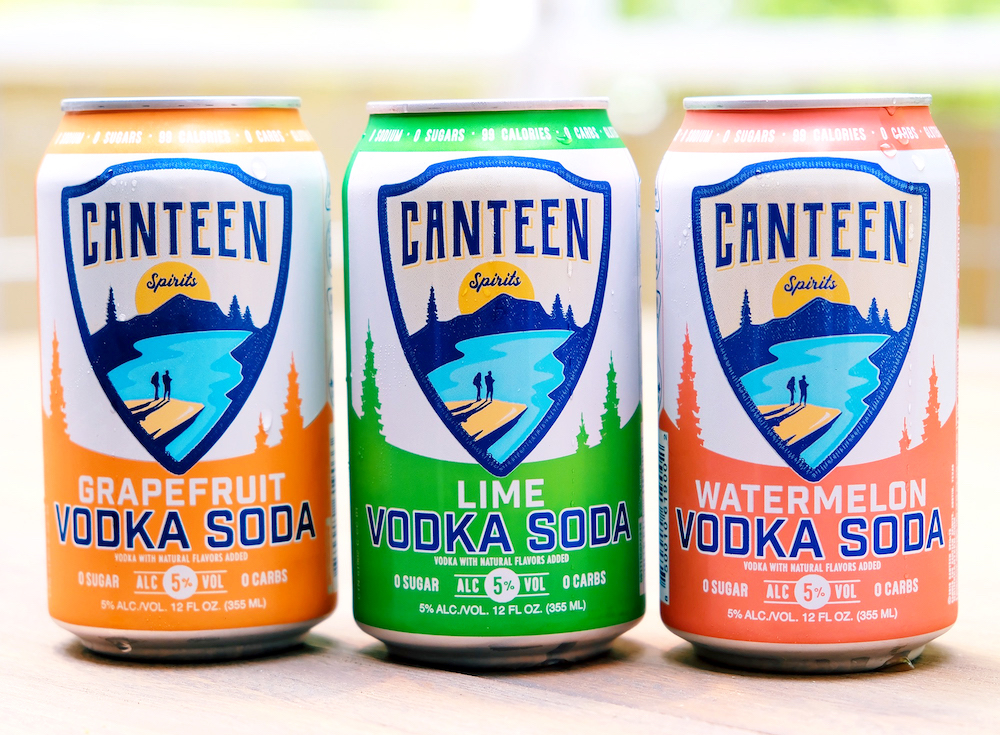Why have beer cans become the new toilet paper?
As though this year weren’t challenging enough, now the alcohol industry must also contend against product shortages caused by a lack of aluminum. Brewers of all sizes, nationwide, have recently struggled to obtain cans. This has caused empty shelves at liquor stores in sections from craft to macro.
What gives? Where did all the beer cans go? For answers we recently spoke with beverage industry veteran Brandon Cason, founder of the nationally distributed RTD line Canteen Spirits.
Beverage Wholesaler: What’s causing the beer can shortage?

Brandon Cason: Since White Claw emerged in 2016, we’ve seen a massive increase in the creation of new spiked seltzer and RTD cocktail brands, all of which utilize aluminum cans. The pandemic has also caused a huge consumer behavioral shift. Spirits sales across the board have spiked, as consumers reach for those comfort drinks, like Jack Daniels or Titos. Consumers also want drinks that are easily portable and affordable, which is where we’ve seen a huge rise in RTD cocktail sales. The Wall Street Journal recently reported that sales of aluminum drink cans in the US increased by 24% by volume in March alone, and at Canteen, we’ve experienced unprecedented sales growth for such a new brand.
When you combine that needed spike in production with the increase in consumption due to the pandemic, the supply just cannot meet the demand, causing a massive shortage.
BW: How has it affected suppliers?
BC: With aluminum cans becoming less available, we’re seeing smaller brands bearing the brunt of this issue. Can distributors are more likely to provide the supply they do have to larger beverage companies, like Coca Cola, so smaller startup brands and craft breweries will have access to less, meaning their production will be limited as well.
BW: How/when will this beer can shortage end?
BC: Can manufacturers are operating at capacity right now, so there is no quick solve for this. The Brewers Association is suggesting the supply won’t meet demand until the end of 2021, so craft brewers and smaller brands will be forced to pause production or create alternative packaging.

BW: How have you obtained aluminum cans?
BC: Without giving away all our secrets, we’re lucky to have formed relationships with suppliers from our time at Waterloo Sparkling Water and now Canteen that has allowed us to continue growing exponentially. You won’t find us missing on shelves anytime soon!
BW: Why have RTDs exploded during the pandemic?
BC: Consumers have always gravitated towards RTD cocktails due to their portability and low-calorie ingredients, but the pandemic has also demonstrated how much more hygienic these types of cocktails are. There is an ease to buying a canned cocktail — you’re able to enjoy your favorite spirit without the mess of mixing a cocktail or worry about the cleanliness of added ingredients.
BW: What’s next for RTD cocktails?
BC: The space is ripe for innovation, and I think we’ll continue to see innovation in flavors and ingredients over the next few years. Canteen has a few new flavors on the horizon we’re excited to launch!
I also see great opportunity for the RTD industry through on-premise sales. It’s going to take some time before consumers are comfortable with a bartender squeezing a lime into their drink, so canned cocktails can be a great fix for consumers who want to support their local bars and restaurants, while also taking extra precautions for their health.
Kyle Swartz is editor of Beverage Wholesaler. Reach him at kswartz@epgmediallc.com or on Twitter @kswartzz. Read his recent piece COVID-19 is Fueling a Home Mixology Movement.









